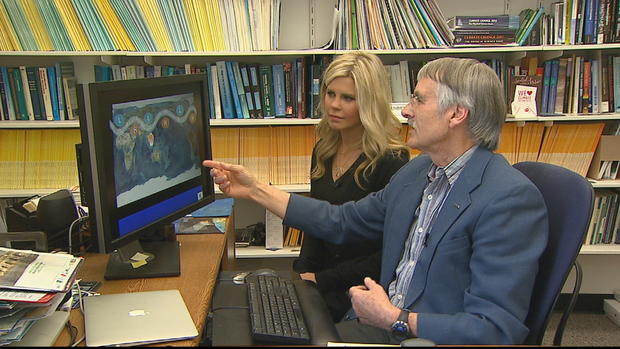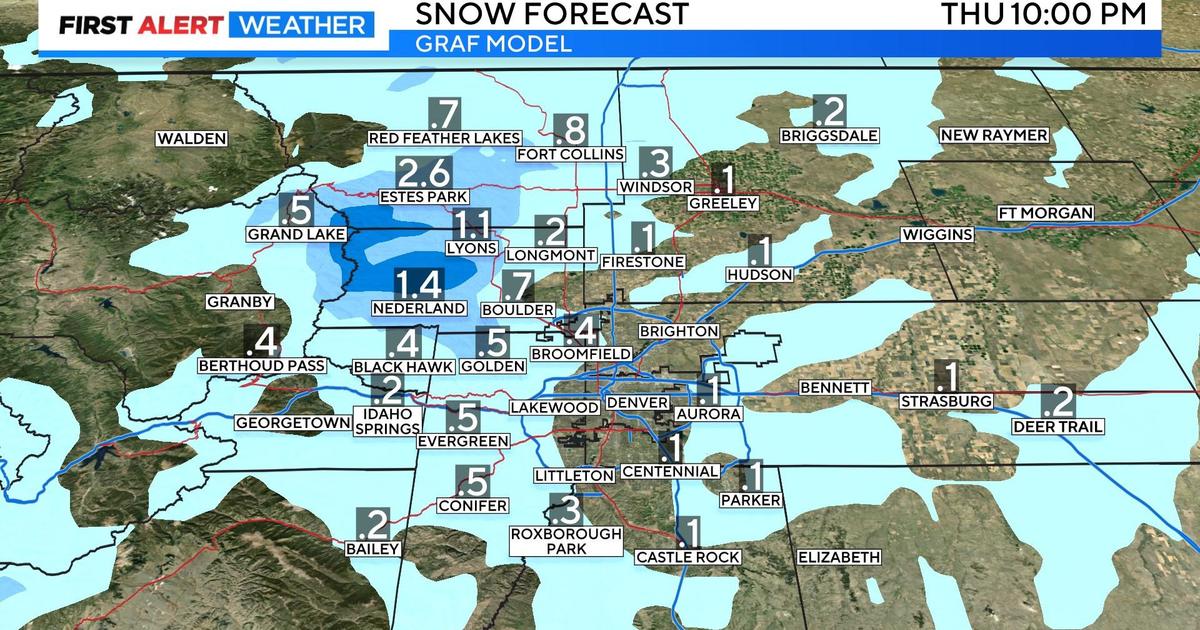Warmer Oceans Create Monster Storms
BOULDER, Colo. (CBS4) - A key component in understanding climate change is understanding ocean temperatures.
The impact was apparent for months starting with record blizzards during the winter of 2014 and stretching into the spring of 2015 as record rainfall swamped many states. Blame it on El Nino.
El Nino is a change in atmospheric circulation and weather patterns across the globe caused by abnormally warm water pooling over the equatorial Pacific Ocean. That warm water moves west to east crossing the International Dateline where it works with the atmosphere to cause changes in weather patterns.
Dr. Kevin Trenberth is a distinguished senior scientist at the National Center for Atmospheric Research. He explained that change in pattern can cause major problems.
"If there is a full blown El Nino, then the storm track becomes very active into California. The sea level along the coast goes up by 6 to 12 inches along that coast. Because of all the rain fall, there is often a lot of erosion along the coast. The big storms and waves also cause coastal erosion and so there can be some really adverse effects of these heavy rains. Mudslides can occur."
But the heavy rains can also fix long term problems.
"Indeed it will fill up all of the reservoirs and make a big difference in the longer term," Trenberth said.
COLORADO'S WEATHER CENTER: Watch more reports from the CBS4 special "The Science of Climate Change"
Trenberth explained how an El Nino event warms up the atmosphere.
"It does that mainly through evaporation, evaporational cooling of the ocean. So the ocean cools but the atmosphere gets moister and that moisture comes into the atmosphere through rainfall, through the release of the heat that gets released when rainfall occurs. And so that warms up the atmosphere, there's a mini global warming associated with an El Nino event."
Sea temperatures are also warmer, about a degree warmer than in 1970s.
While that may not seem like a drastic increase, it could mean future storms are much more intense. That's because those warmer ocean temperatures allow the air to hold more moisture.
"That means when we do have these storms, it rains harder. That means it invigorates what's going on in the atmosphere. The storms can be stronger and more intense.
"It means even here in Colorado we're apt to have somewhere in the neighborhood of 5 to 10 percent more rainfall when we do have an event."
That makes flooding and erosion an immediate concern for future events but there are also long term implications.
The heavy rain or snow could be followed by long dry periods, raising the risk of drought and increasing the stakes for managing water.
"Part of the challenge in these kinds of events is, indeed, can you capture and manage the water at the times you've got it for the times when you know you aren't going to have it? And we know those times are going to occur."






